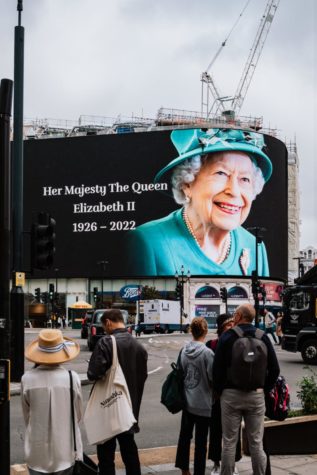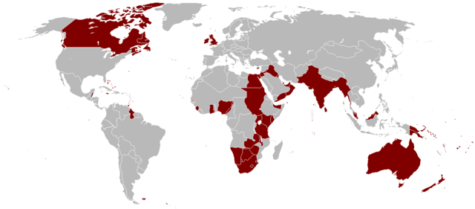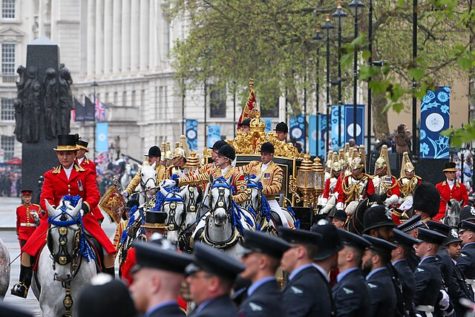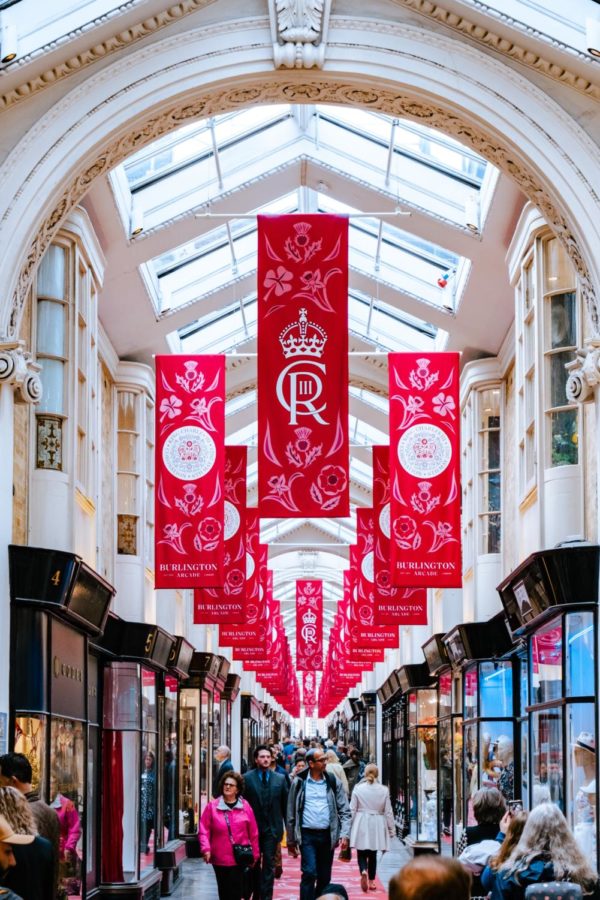The Prized Jewel of a Fallen Empire: King Charles’ Coronation
A Once-Glorious Empire makes another attempt to reestablish itself.
Once upon a time, there was a land so great and mighty. Legend had it that the sun would never set on this empire. Until… it did. Unfortunate? Perhaps for Great Britain, but for the rest of the world, it was a blessing not in disguise.
“L is the Lion. Who fights for the Crown.”
On May 6th, 2023, Charles III was crowned king of the British Empire after the passing of his mother, former Queen Elizabeth II, at the age of 96. The United Kingdom mourned the end of seven decades of Queen Elizabeth II’s reign. She bore witness to Britain’s great and not-so-great history, being present during countless revolutions and the ever-evolving human society. However, it is important to acknowledge that the late queen also represented the dark history of British abuse and oppression.
The British Empire engaged in numerous actions that caused harm, suffering, and oppression to various groups of people. These instances include colonization, slavery, exploitation, and the suppression of indigenous populations. The suppression of indigenous populations occurred in various parts of the British Empire. Indigenous cultures, languages, and values were often discouraged or marginalized in favor of British norms and traditions. Under British rule, the indigenous peoples faced discriminatory policies, forced assimilation, and land seizures.
There were instances during Queen Elizabeth II’s reign when smaller and weaker sovereign nations faced challenges to their sovereignty. For example, in 1982, the Falkland Islands in the South Atlantic became a focal point of conflict when both Britain and Argentina claimed the territory. Eventually, tensions rose and led to a war between Argentina and Britain. Later, the United Kingdom was able to reclaim its rights to the territory after achieving victory in the war.
It is undeniable that while expanding the British Empire, British officials became responsible for not only taking land but also depriving people of their traditions. Additionally, they looted countless valuable items from the regions they colonized. Some of these artifacts, like the Koh-i-Noor, still exist. However, the British Empire asserts that these possessions were gifted to them by those regions, but such claims lack any substantiated evidence. There is no written documentation regarding when and how these artifacts came into the possession of the British. Moreover, the colonial narrative contradicts these claims, as most of these artifacts symbolize a painful reminder of the exploitation that occurred during the colonial era.
After Queen Elizabeth’s death, the discussion surrounding the Koh-i-Noor diamond resurfaced. Britain’s former colony, India, demanded the return of this highly prized jewel. The controversy intensified when there were talks about placing the diamond on the crown of queen consort Camilla. This news angered many critics, and it also displeased India. Despite the proposal being rejected due to significant controversy, the debates surrounding the issue did not completely subside. Furthermore, the Queen Consort continued to wear the Cullinan V diamonds on her crown, which originally belonged to Queen Mary. These heart-shaped stones, approximately 18.8 carats, were worn by Queen Mary during her visit to the Delhi Durbar (Court of Delhi). The diamonds originated from Pretoria, South Africa.

The origin of these diamonds can be traced back to the Premier Mine in Pretoria, South Africa, where they were discovered. Their journey from the mines to the British crown represents a complex history of colonial extraction and appropriation. The continued presence of these diamonds in the British crown serves as a poignant reminder of the enduring legacy of colonialism and the debates concerning cultural heritage and restitution. The discussions surrounding the Koh-i-Noor and the Cullinan V diamonds highlight the ongoing tensions and questions about ownership, representation, and the rightful place of such artifacts in a post-colonial world.
The controversy surrounding the Koh-i-Noor diamond and other prized relics looted by Britain is just one manifestation of the intricate legacy left by the empire. At its peak, the British Empire held dominion over 32 overseas territories. However, over time, Britain has relinquished a significant number of these territories, particularly after the two World Wars and its involvement in other global conflicts, which depleted its power and influence. Presently, Britain retains governance over only fourteen overseas territories, but the desire for independence among many populations suggests a diminishing grip on the global stage. As aspirations for self-determination grow, it appears that Britain’s dominion over the world will continue to decline.

“E is our Empire. Where the sun never sets.”
On the day of the coronation, meticulous attention was given to the presentation, aiming to redefine the concept of monarchy. The Crown’s YouTube channel streamed a live coverage, showcasing a grandeur that was about to unfold. While the event may not have held significant political implications, it was regarded as a once-in-a-lifetime occasion, destined to be engraved in history. Security measures were stringent due to the presence of notable global figures, and representatives from numerous countries attended the event. Among them was Bangladesh, a nation that once experienced colonial rule, sparking intense debates about its participation.
The coronation menu reflected a deliberate effort to embrace diversity, featuring culinary delights from various cultures to cater to different taste preferences. This gesture served as symbolic compensation for the historical erasure of identities perpetrated by the monarchy in the past. It signified their newfound commitment to inclusivity and served as a means of communication for their aspiration toward a more inclusive society.
Other prominent figures in attendance included world leaders, foreign royalty, distinguished individuals from Britain, and even pop celebrities like Katy Perry. However, the spotlight was firmly fixed on the newly crowned king, Charles, as he ascended the throne. His wife, Camilla, also garnered significant attention from the audience. Camilla donned a white silk dress designed by Bruce Oldfield, a British fashion designer renowned for creating dresses worn by Princess Diana, including her iconic silver lame dress.
This choice of attire ignited a wave of discontent as Camilla continued to be compared to the beloved “People’s Princess.” Many felt that no matter how extravagant her dress was, it could not surpass Princess Diana’s fashion legacy. Nevertheless, Camilla’s dress conveyed multiple aspects of the monarchy and carried stories of its own. One example is the flowers that indicate the affinity that she and Charles share for the British countryside. On the cuffs of each sleeve, there are roses, thistles, daffodils, and shamrocks, representing the four nations of the United Kingdom.

Political rituals, religious ceremonies, and storybook events captivated both the audience and the public throughout the entire spectacle. The term “fairy tale” was repeatedly used to depict the unfolding of the coronation. Every intricate detail exuded opulence, from exquisite garments to unseen relics and delectable meals. But amidst this magnificence, what was the underlying narrative? Why bother with such a fairy tale?
King Charles’ coronation served to convey the continuity of the monarchy in the modern era. As The New York Times journalist James Poniewozik eloquently expressed, it aimed to “reframe the narratives around the royal family and to introduce Charles not just as a leader but as a lead.” In essence, the coronation functioned as a strategic endeavor to redefine the public perception of the royal family, highlighting Charles as not merely a figurehead, but as a visionary leader taking center stage in the evolving story of the monarchy.
King Charles’ coronation served to convey the continuity of the monarchy in the modern era.
Tasnim Haque is the Chief Graphic Designer and Editor-in-Chief of ‘The Observatory’ yearbook. She is also a Staff Reporter for 'The Science Survey.'...











